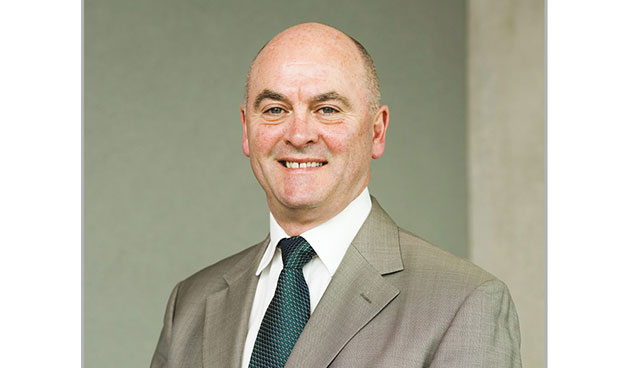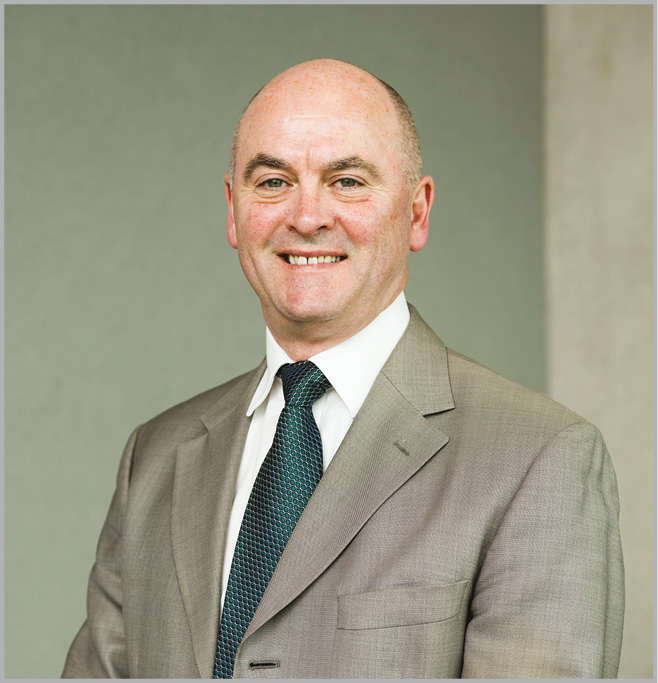A healthy understanding of data potential


Director of eHealth and External Collaboration of the Health and Social Care Board, Sean Donaghy, discusses the wider implementation of data analytics across health and social care for better patient outcomes and service delivery.
The utilisation of data to enhance the quality of patient care is a vital part of how health does its business, week to week, and year to year says Donaghy. The establishment of a health data warehouse for Northern Ireland over a decade ago has provided a good basis from which health is now in the process of using that information to support better care.
Initially established due to a need to better manage performance levels, recognition of the potential value of this data collected from many organisations and care systems has seen the development of mechanisms to make the information available to ethically approved researchers and to HSC service teams. This has involved providing access to de-identified data to approved applicants to carry out ethically approved research in a safe haven environment and also the provision of de-identified data to internal health service teams to drive service improvement. The Health & Social Care (HSC) ‘Honest Broker Service’ was created in 2013 by the regional Business Services Organisation, building on the earlier data warehouse development work. The service is driving awareness of the information resource, with the rate of applications to access data increasing year on year. Donaghy says: “When gathering data in the warehouse we were very aware of the potential for this data to be a source of information for approved research projects and to HSC teams wanting to improve their services.”
He adds that while this service has been an important tool, we need to work to continue to promote awareness of the potential of this data to allow its predictive capability to be used more frequently. A key objective is to provide greater access to this data to front line clinicians to support service improvement via dashboards and other approaches.
Donaghy points to the Risk Stratification programme currently used within general practice, utilising data from GP clinical systems for predictive analytics, as an indicator for how a similar process could be rolled out across the whole health and social care sector.
“GPs have been pioneers in using clinical information systems to help them manage patient care and have been doing so for over 20 years. The close link between both the recording of information in their clinical systems and the usage of the recorded data by the GP practice team has led over time to the creation of high quality data sets. Risk Stratification involves using the data held on GP systems to assess patterns of ill-health and highlight them back to the practice to support early intervention, seeking to prevent further use of the health system in the form of hospitalisation or other emergency intervention. As well as working to improve the predictive accuracy of the risk stratification algorithms, a key part of the project is also to support continued improvement of the data.” Explaining the importance of ‘rich’ data, Donaghy outlines: “Because of the variety of services and complexity of health delivery, we need to continually invest time and effort in developing an agreed structure for the data, so that wherever in the wider health and social care system information is captured it can be shared in a way that retains its meaning and makes it possible to draw appropriate conclusions about how to improve practice in the future.”
The transition to widespread use of robust analytics requires greater investment and the establishment of a broader predictive analytics team working within the Health and Social Care. However, Donaghy explains that in times of limited resources, such an initiative will require a demonstration of value. One initiative hopeful of doing this is the recent collaboration with the Department of Health, Atlantic Philanthropies and the Northern Ireland Executive which represented a £7.5 million investment in an eHealth Dementia Analytics Pathfinder.
“Part of what we want to do is use the case to demonstrate the value of making a specific investment in an analytics team. This project will gather patient information and work with those conducting research in the area of dementia and those providing dementia care services, to look at how the data can help re-shape those services and improve their quality,” says Donaghy.
Technology
The introduction in 2013 of the Northern Ireland Electronic Care Record, gathering patient information that is already digital to make available to clinicians at the point of care, has not only led to safer, better care but has also raised the awareness of the value of quality data for clinicians.
Right now though, too much information is still paper-based. This affects nurses making vital signs records in hospital, social workers in the community recording assessments, and many others. Donaghy highlights that while this method works at the point of treatment, it may not support subsequent care decisions, and makes it difficult and expensive to gather information for research and predictive analytics. “This transition away from paper is one that we are focussed on making happen but there is still a long way to go,” he says.
Donaghy is leading a team that is now bringing forward the programme for the creation of an Integrated Digital Platform for health and social care. The long-term project, estimated to be operational by 2022, would require an investment of around £200-250 million and the business case for its creation has now been passed on to the Department of Health.
Outlining the practicalities of how such a system would work, Donaghy says: “This is essentially creating a digital record for every citizen, built on a digital platform that streamlines services and the patient journey, links information across primary, secondary and community and social care, and provides a platform for innovation and improvement. Clinical advances are so rapid that it is now next to impossible to expect a practitioner to be able to retain all the latest guidance and best practice. Utilising this data will allow for the creation of a digital decision support system aiding the clinician in delivering the best diagnoses or treatment. An Integrated Digital Platform would include a ‘patient portal’, whereby citizens can not only see their records but also engage in a two-way process between patient and practitioner. This includes the ability to input data, for example, on blood pressure or blood sugar readings.

“Patient portals will allow for two-way traffic such as online reviews, as opposed to a trip to the GP surgery or outpatient department every time expert advice is needed. With data being input more frequently and more widely, algorithms can be built to provide guidance and track progress. These elements will all aid in the overall goal of ensuring more people can be treated quicker, better and if possible at home.”
Donaghy explains that highlighting the value of a national patient portal, generic across all services, will form part of the eHealth Dementia Analytics Pathfinder programme. His team hope to have a patient portal, focussing in the first instance on dementia patients, carers and support network live by 2018. Success of this service should form an evidence base for wider roll out.
While the remote telemonitoring programme is currently ongoing in Northern Ireland, supporting people to be treated in their own home, Donaghy admits that emerging technology has offered a solution to making wider usage more affordable and sustainable. Currently, integrating the software into apps and therefore hand-held devices, such as mobile phones, is being explored as a replacement to the current telemonitoring specific technology.
Security
As with all things digital, making information and services more accessible also carries with it increasing security risks. Asked what security measures would need to be included in operating an integrated digital platform, Donaghy states that it is something that has been widely discussed.
“Anyone utilising the patient portal for example, will have to firstly receive a physical password or code from the service they are using. This physical interaction ensures that the right person is being given access to their own care record. Currently we are collaborating with nidirect around a programme for identity assurance, for now it is generally accepted that any outcome will require some form of physical identity verification before password protected access is created, given the sensitivity of the information being made available.”
Security, Donaghy explains, centres not just on protection from outside sources, but also the ability for citizens to feel comfortable with how their data is being stored and shared.
“I think a major challenge in delivering a better digital service, utilising our data to the full, is around public awareness. Prior to us launching the NI Electronic Care Record, we operated a mass notification process to help inform people of the benefits of such a system. We found that largely people understood, but there were also concerns. Over the course of the next six months we are keen to continue that conversation with the public and to engage with various patient groups to help them understand how retention and sharing of data can help to plan for a better health service and support high quality research.”
Asked whether political unrest in Northern Ireland was causing delays in the ambitions of eHealth, Donaghy believes that there is widespread understanding that delivering the digitisation of health is a priority.
“There is a general understanding that we must not only connect the citizen to the health service in a more efficient way, but also that the potential exists to foresee and change health outcomes through better use of data.”
“The pressure on our health system is such that we know we can’t continue down the same path and expect to deal with a growing and ageing population sufficiently. There is a general understanding that we must not only connect the citizen to the health service in a more efficient way, but also that the potential exists to foresee and change health outcomes through better use of data.
“This understanding has encouraged the prioritisation of the digital agenda over some other pressures. The Delivering Together programme references the digital agenda heavily, and creates the confidence to press on with an ambitious programme. Hopefully, that will be overseen by local political decision makers in the near future.”





